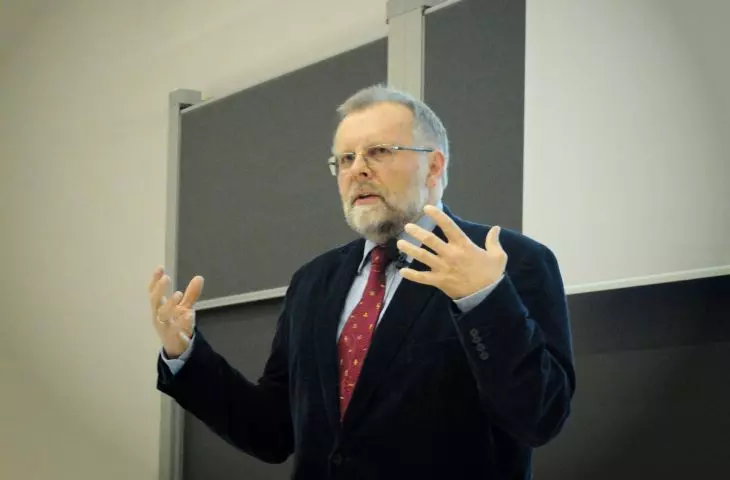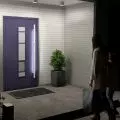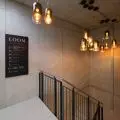Interview from A&B 06|2022 issue
Put up blinds and don't install a heater under the window? Yes - countering the effects of climate change may be simpler than we think. Trying to understand what our comfort actually is shows that calls for a return to proven solutions for its regulation, including improving what we already have, rather than building from scratch, do not stand in its way. Professor Szymon Malinowski is interviewed by Alicja Gzowska.
Alicja Gzowska: There is a lot of talk about the responsibility of urban planners, architects and designers to halt adverse climate change on our planet. In your opinion, does this industry really have that much influence?
Prof. Szymon Malinowski: Yes, this influence is huge. Construction and housing account for about 30 percent of global greenhouse gas emissions. One can start with the simplest things, such as good design of energy-efficient heating and ventilation systems in apartments. Then there is the issue of land use with consideration for biodiversity and our quality of life. And further, construction, architecture and urban planning have a huge impact on many other aspects of business, including industrial, transportation. With increasing urbanization, seeing land-use issues in a socio-economic context is a very important issue. There is no chance that billions of people will inhabit the Earth evenly, so we need sensibly managed urbanization that will allow us to preserve at least the necessary parts of nature.
Alicia: At the same time, we are operating in a world where the needs of a rapidly growing population are growing just as rapidly. Relentless development seems like a necessity, but slogans of modernity and progress have for decades justified actions that have a disastrous impact on the planet.
Prof. Szymon Malinowski: This is no way to operate on a finite planet. This discourse is completely detached from physical and natural realities. Underlying this reasoning is the belief that humans mean nothing to nature. While humans are the main element or system shaping life on our planet - both in terms of climate and biodiversity. Unfortunately, this impact is neither thoughtful nor beneficial, nor does it offer hope for a better future. This kind of reasoning leads astray.
Alicia: So far, human attempts to interfere with natural systems are yielding unpredictable results. How is a designer supposed to work with nature, whose ways of functioning he cannot comprehend?
Prof. Szymon Malinowski: Let's not forget about money. Most failures are due to a simple reason - all that matters is money. At the same time, people think that if they design something, they will do it better than nature. From the garden next to the house, where we try to plant every bed and every plant according to our own vision, to the surroundings of buildings and infrastructure of various kinds. This is just a vision. We think that if we leave something to nature, it will go wrong. And indeed, it will probably go its way. And we should learn to live with it. To develop that part of the space in which we live, which affects us as closely as possible. And leave the rest as much as possible. And actions such as the constant replanting of trees in parks, scaring people with the threat of old trees in the city, and so-called maintenance, which very often simply leads to the complete destruction of greenery, is something we should avoid.
Map of existing and planned bicycle paths in Warsaw - drafted by SISKOM on the basis of the Strategy of Development of the Capital City of Warsaw until 2020 and the Study of Conditions and Spatial Development for the Capital City of Warsaw.
© SISKOM
Alicja: At the same time, nature very rarely suggests solutions regarding, for example, the design of a house.
Prof. Szymon Malinowski: That's why I pointed out that what is needed here is a proper separation of these spaces. Our whole civilization is based on the fact that we have created for ourselves conditions in which we are comfortable. And to a certain extent - a reasonable range of comfort - we should continue to do so. Because while not all of the solutions we come up with are reasonable, we have plenty of needs that architecture meets and should meet. And here there is no discussion.
Only we very often do not understand many things. Such as how we function in buildings. For example, there is a lot of talk about the climate inside the building, air conditioning, comfortable temperature range inside. All sorts of research is being done, but there is a lack of thought about what comfort is for the human body, or how the body's energy is exchanged with the environment. Why was it that in the past, even though the air temperature in the apartment or building itself was low, a stove that had a temperature of, say, 35 degrees over a large area gave a sense of comfort? Thermal comfort is not just a matter of air temperature - to which it is often reduced. We talk about insulating buildings, and forget that the vast majority of heat loss occurs through ventilation. When you do ventilation with heat recovery, you don't need to heat buildings so much. Maybe sometimes you don't even need to heat them at all, if you wisely take into account that we have a lot of electricity consumers inside, for example, and a side effect of their operation is also the production of heat.
We forget these basic things. We don't remember how much and what kind of energy the sun provides; at what lengths of radiation through what and how it penetrates. How to use it, when to shade - we know only a little. Poland installs huge amounts of air conditioning, and forgets that it is enough with an awning or a blind to block the sun's energy supply for part of the day to make us comfortable. And at night cover up the escape of energy in the form of infrared radiation. I know this from my own experience. At home, on the loggia facing southwest, I hung a wooden outdoor blind. Seemingly a trifle, but the fact that I can close, open or move the blind for myself has incredibly improved my comfort in using this space.
Alicia: So a huge part of the potential of architecture is to return to simple, proven solutions, such as shutters?
Prof. Szymon Malinowski: Not only that, but there is indeed a huge potential here. We just need to start educating architects and users a little differently. Because the architect will often do what the user wants him to do. And, as I mentioned, sometimes it can be about a small thing. If I, with a single movement, instead of pushing the air-conditioning button, can move a lever that will cover my energy supply or in some other simple way improve my comfort, why not do it?
Alicia: Historically proven solutions may not be enough, I think extensive research and adaptation of solutions to modern times is still needed.
Prof. Szymon Malinowski: Sure, but really in very many cases - the simple ones - it is enough to apply what we know very well. Or rethink our habits. We used to learn that the radiator must be placed under the window, that is, in the place where we immediately have the greatest heat loss. Of course, if we are building a very complex public building, a large office building or something else, such a task gives much more room to demonstrate knowledge of how the building works, how it functions in the environment.
I'm talking to a lady in the new building of the UW Physics Department, built by a very well-known architectural firm. I like it a lot, it's nice and has a lot of cool solutions and advantages. Unfortunately, when it comes to its interaction with the environment, there is just drama. Some things in it are completely ill-conceived. This building suffers from the same disease as most modern architecture - it is an attempt to build something perfectly from scratch. But so far nothing has been built perfectly. Problems always come out. That's why we often get a better result by improving something we already have.
Courtyard of the new building of the Institute of Geophysics of the Faculty of Physics of the University of Warsaw - design: Kuryłowicz & Associates
Photo: © Faculty of Physics, University of Warsaw
Alicia: In the case of the Physics Department building, it was possible to avoid the design tender procedure, usually used in a rather immature form.
Prof. Szymon Malinowski: Sure! If the key criterion was the cost of the building together with the cost of fifteen to twenty years of its operation, it would look different right away!





























